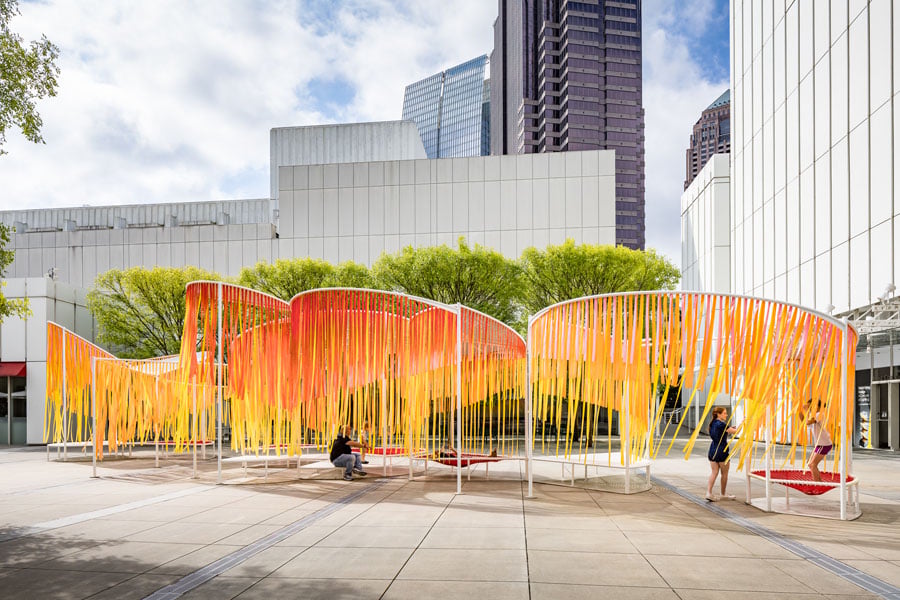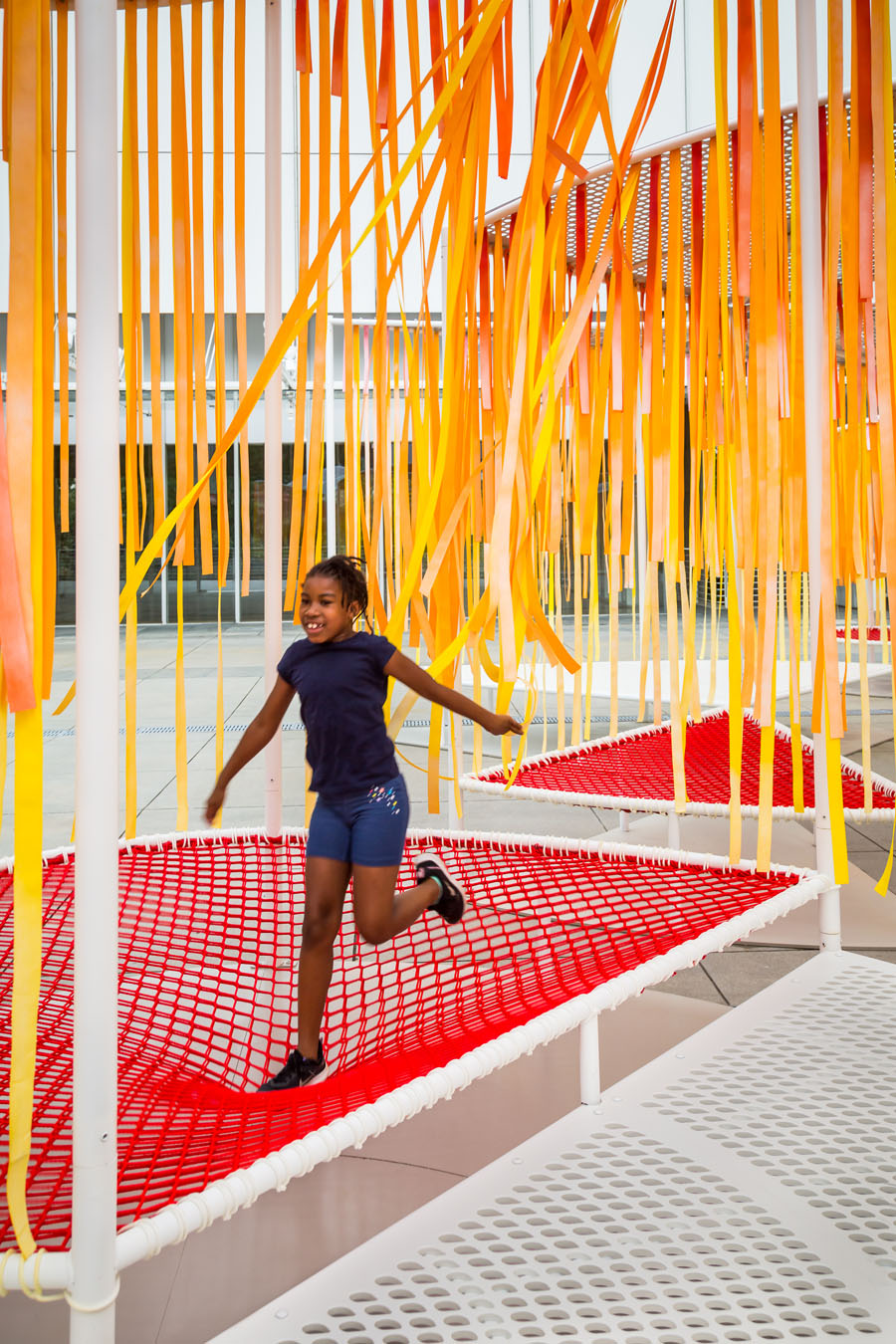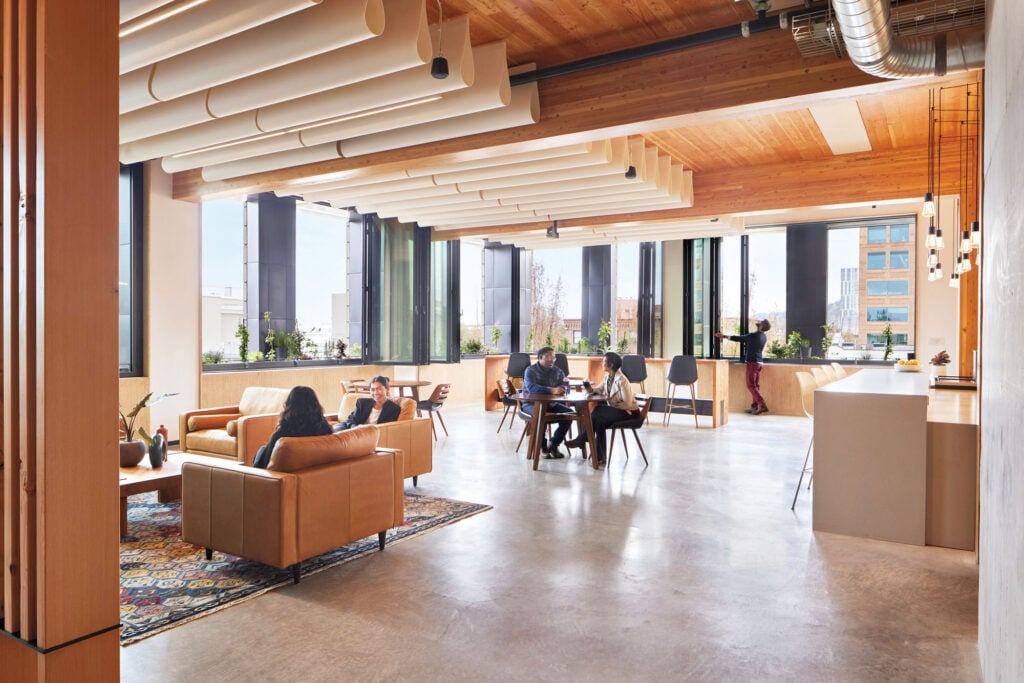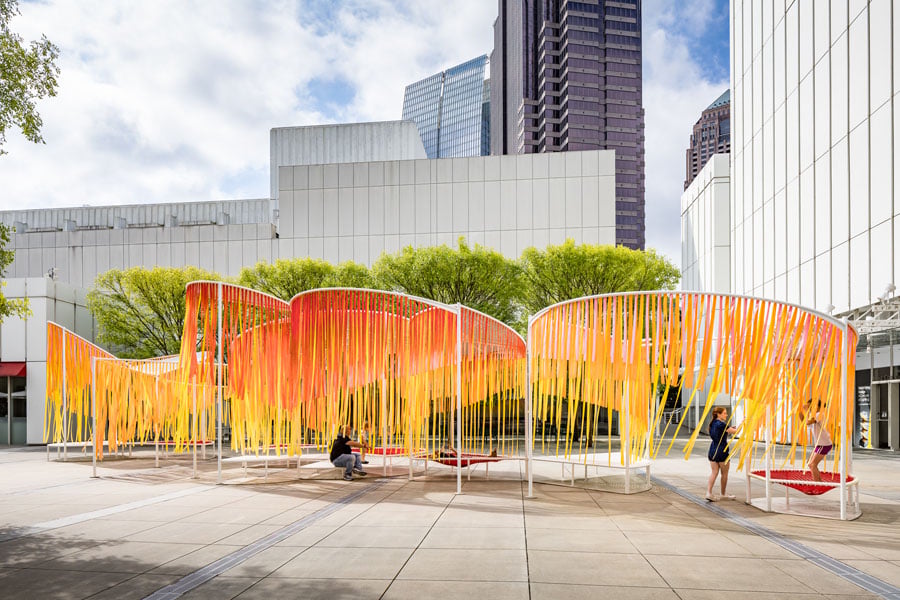
September 8, 2021
Bryony Roberts’s Outside the Lines Makes Space for Everybody
Outside the Lines offers a broader interpretation of “the public” than most public spaces offer.

Installation view of “Outside the Lines.” Photo Credit: Jonathan Hillyer. Courtesy of the High Museum of Art.
From afar, Outside the Lines is vaguely reminiscent of Christo and Jean-Claude’s 2005 The Gates in Central Park, but upon closer examination reveals minute attention to textural detail: Arranged in a winding maze, colored fabric strips dangle at varying heights, shrouding pockets of netting stretched across the steel frame. The webbed netting, which doubles as hammock seating, also rises and falls in height. “We revised the materials list over the course of six months based on conversations with advocates,” Roberts says. “We’d originally planned to use metal mesh to create a sound element but shifted to something soft because people with Autism said metal sounds were too harsh. And we learned that the metal could potentially get caught in wheelchairs.”

Installation view of “Outside the Lines.” Photo Credit: Jonathan Hillyer. Courtesy of the High Museum of Art.
Now made from polypropylene webbing, the strips create only a very light rustling in the wind and are arranged in a custom-spray-painted color gradient. “I wanted there to be a range of color, so that some parts offer lower stimulation and are more calming, while other parts offer higher stimulation for a brighter, more social atmosphere,” says Roberts. At the outer edges, the muted palette of yellow and white forms a “quiet zone” leading inward to the richer reds and oranges of the central “social zone,” where there’s more opportunity for visitors to interact.
The installation’s seating options are also texturally diverse. Softened at the edges for safety, individual cutouts mirror the larger triangular and circular shapes that make up the maze-like whole, arranged in a grid pattern that changes across the installation. These tactile details were inspired by conversations with advocates from Atlanta’s Center for the Visually Impaired. Roberts notes, “We talked about navigation through touch. I wanted to create something rich and varied enough in texture to hold kids’ attention.”
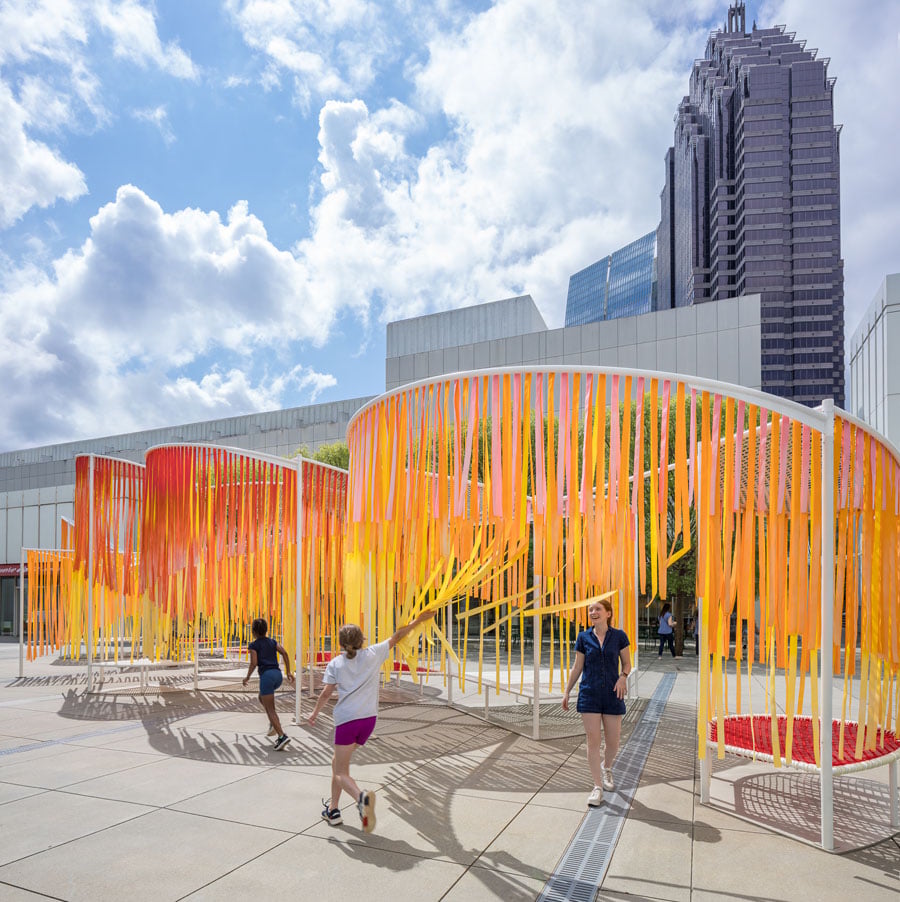
Installation view of “Outside the Lines.” Photo Credit: Jonathan Hillyer. Courtesy of the High Museum of Art.
According to Monica Obniski, the High’s curator of decorative arts and design,“a city’s public space is enormously important and should be accessible to all segments of the population, not just to a certain patron class or privileged few.” She has two firm criteria for installations in the Piazza: They must be interactive in some way, and they must appeal to all ages. Outside the Lines goes far beyond. “It makes room for multiple groups to connect and discover, appealing to those with physical and developmental differences without segregating them from the rest of society,” says Obniski, “and without separating them from each other. It’s beautiful.”
Would you like to comment on this article? Send your thoughts to: [email protected]
Latest
Projects
5 Buildings that Pushed Sustainable Design Forward in 2022
These schools and office buildings raised the bar for low-carbon design, employing strategies such as mass-timber construction, passive ventilation, and onsite renewable energy generation.
Projects
The Royal Park Canvas Hotel Pushes the Limits of Mass Timber
Mitsubishi Jisho Design has introduced a hybrid concrete and timber hotel to downtown Hokkaido.
Profiles
Meet the 4 New Design Talents Who Made a Mark This Year
From product design to landscape architecture and everything in between, these were the up-and-coming design practices making a splash in 2022.




